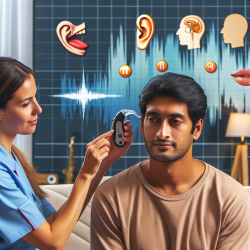Introduction
In the realm of pediatric and neonatal intensive care, continuous monitoring of vital signs is paramount. Traditional methods often involve cumbersome wired systems that can impede clinical procedures and essential parent-child interactions. However, a groundbreaking study, "Skin-Interfaced Biosensors and Pilot Studies for Advanced Wireless Physiological Monitoring in Neonatal and Pediatric Intensive Care Units," introduces a transformative approach with wireless, skin-interfaced biosensors. This innovation not only matches the accuracy of traditional methods but also offers additional features that could revolutionize care in neonatal and pediatric intensive care units (NICUs and PICUs).
Understanding the Technology
The study presents a wireless, non-invasive technology that offers equivalent measurement capabilities to traditional hard-wired devices. These skin-interfaced biosensors are designed to monitor vital signs such as heart rate, respiration rate, temperature, and blood oxygenation. Beyond these, they also track movements, quantify the benefits of skin-to-skin care, capture cardiac acoustic signatures, record vocal biomarkers, and monitor systolic blood pressure surrogates.
With over 480,000 critically ill infants and children entering ICUs annually in the United States, the need for such advanced monitoring systems is critical. These biosensors provide a non-invasive, continuous, and accurate monitoring solution, potentially reducing complications associated with traditional methods.
Clinical Implications
For practitioners, integrating these biosensors into clinical practice could significantly enhance the quality of care. The wireless nature of these devices facilitates uninterrupted skin-to-skin contact, known as Kangaroo Care, which is vital for neonatal development. The ability to continuously monitor without the hindrance of wires allows for more natural interactions between parents and their infants.
Moreover, the additional data provided by these biosensors, such as seismocardiograms and vocal biomarkers, can offer deeper insights into a child's health. These metrics could aid in early detection of complications and provide a more comprehensive understanding of a child's physiological state.
Encouraging Further Research
While the pilot studies demonstrate the potential of these biosensors, further research is encouraged to explore their full capabilities. Practitioners are urged to consider participating in or initiating studies that could expand the application of this technology. Such research could focus on refining the technology, exploring new applications, and ultimately improving patient outcomes.
Conclusion
The integration of skin-interfaced biosensors in NICUs and PICUs represents a significant advancement in pediatric care. By providing accurate, continuous monitoring without the limitations of traditional wired systems, these devices can enhance both clinical outcomes and the quality of life for patients and their families. As we embrace these innovations, the potential for improved pediatric care is immense.
To read the original research paper, please follow this link: Skin-Interfaced Biosensors and Pilot Studies for Advanced Wireless Physiological Monitoring in Neonatal and Pediatric Intensive Care Units.










